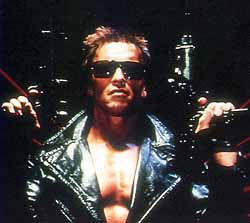
![[Welcome]](../../graphics/content5.gif)
![[Features]](../../graphics/content4.gif)
![[In Focus]](../../graphics/conten3y.gif)
![[Reviews]](../../graphics/content2.gif)
![[Info]](../../graphics/content1.gif)
|

Some Historical Reflections on the Paradoxes of Stardom in the American Film Industry, 1910-1960
by Brian Gallagher |
|
 Stars--who now come from many more realms than just the movies--still continue to function in contradictory and paradoxical ways in postmodern culture. Clearly, stars still figure as influential images whose personal lives can seem, even when they are not, as "scripted" as their professional activities: consider the recent metamorphosis of Magic Johnson from basketball superstar to the country's most public AIDS victim, and specifically his triumphant return to the "community" of professional basketball in the 1992 All-Star game. Oddly, perhaps, in this media-saturated era, there continue to be more or less "pure" movie stars, stars whose celebrity derives almost entirely from their work in films. Some of them, like Paul Newman and Robert Redford, function as their own producers (and sometimes directors) in an age when independent production is the long-established norm. Many others, though, prefer to work as Stewart did: essentially free-lance. Stars--who now come from many more realms than just the movies--still continue to function in contradictory and paradoxical ways in postmodern culture. Clearly, stars still figure as influential images whose personal lives can seem, even when they are not, as "scripted" as their professional activities: consider the recent metamorphosis of Magic Johnson from basketball superstar to the country's most public AIDS victim, and specifically his triumphant return to the "community" of professional basketball in the 1992 All-Star game. Oddly, perhaps, in this media-saturated era, there continue to be more or less "pure" movie stars, stars whose celebrity derives almost entirely from their work in films. Some of them, like Paul Newman and Robert Redford, function as their own producers (and sometimes directors) in an age when independent production is the long-established norm. Many others, though, prefer to work as Stewart did: essentially free-lance.
|
|


